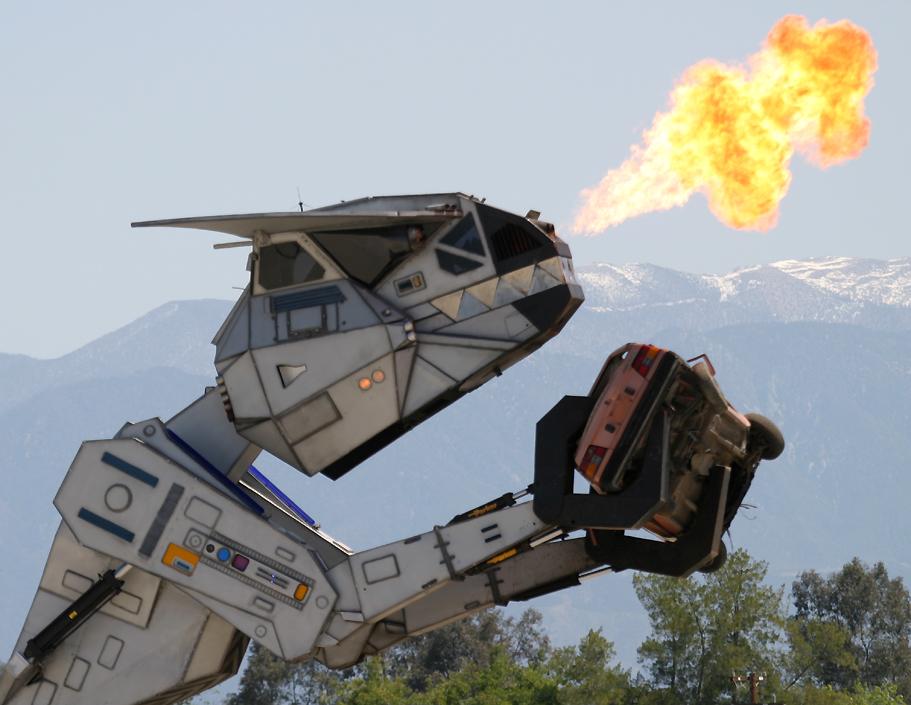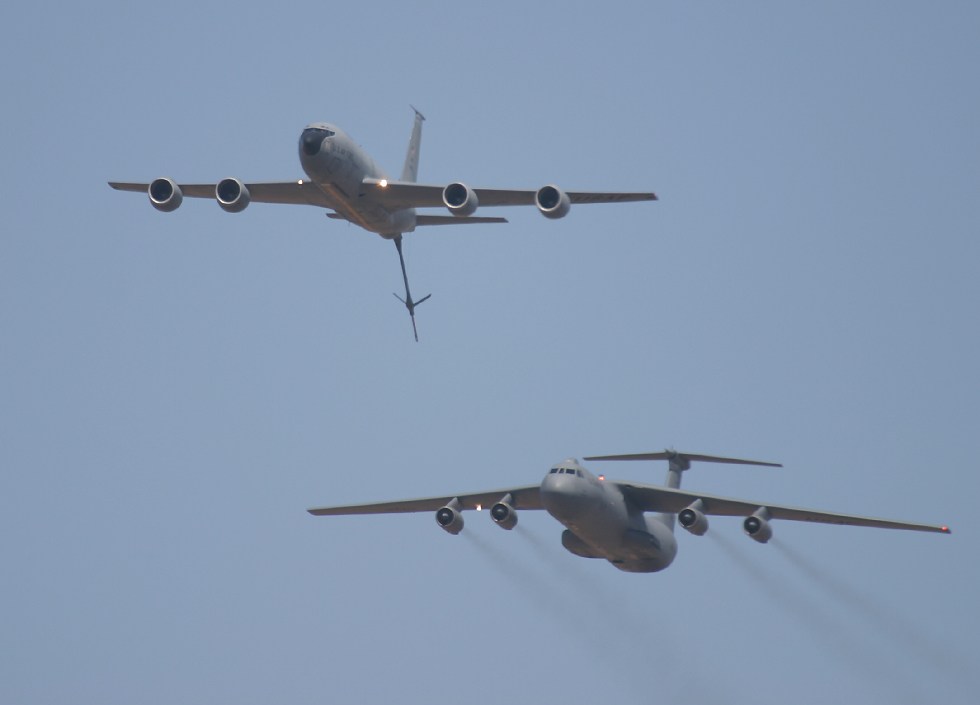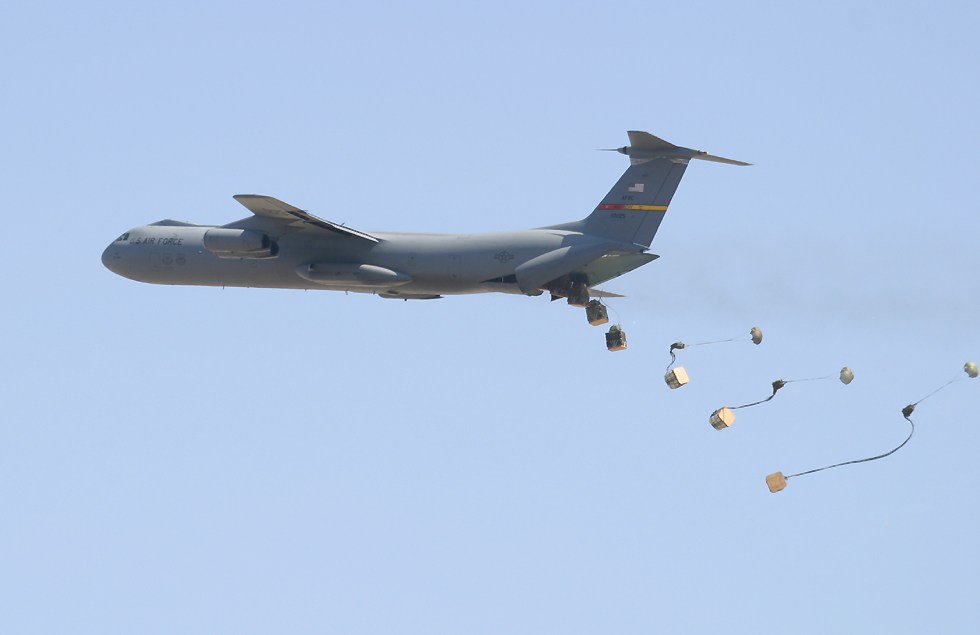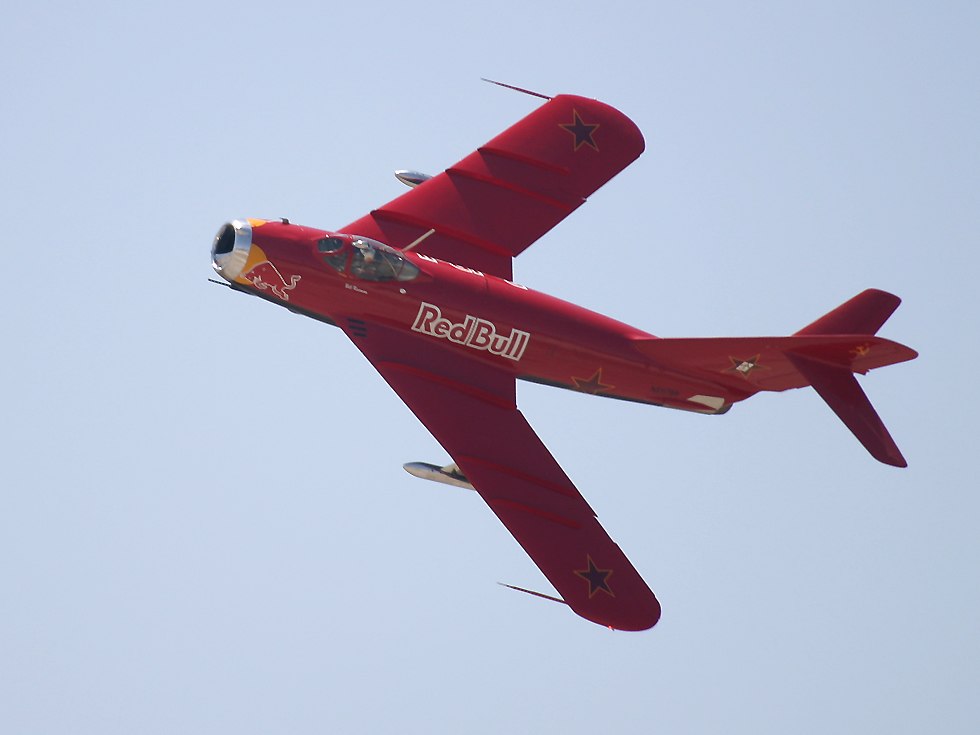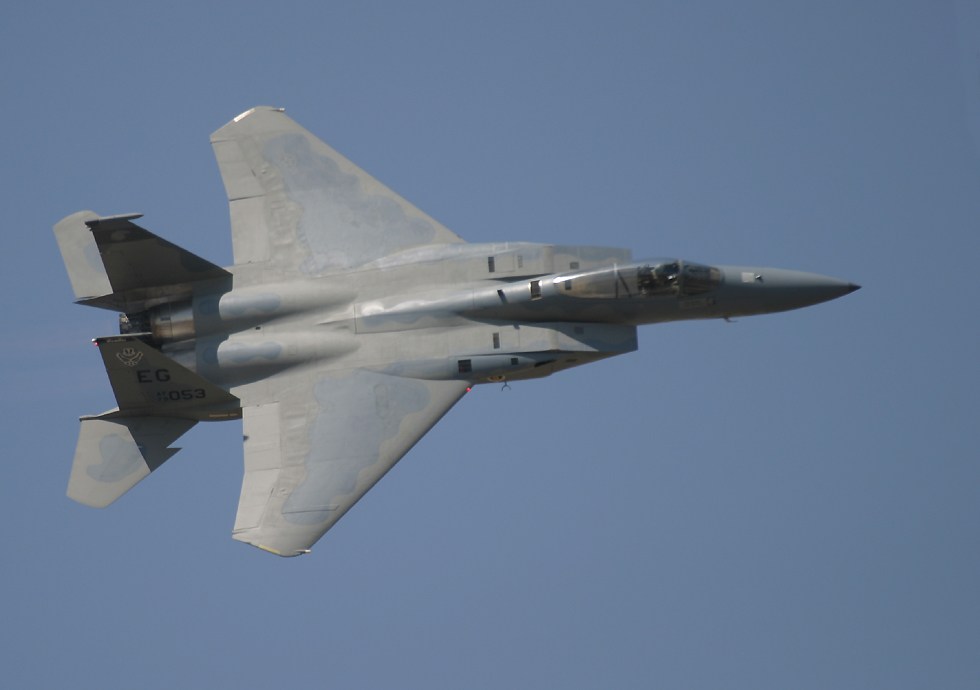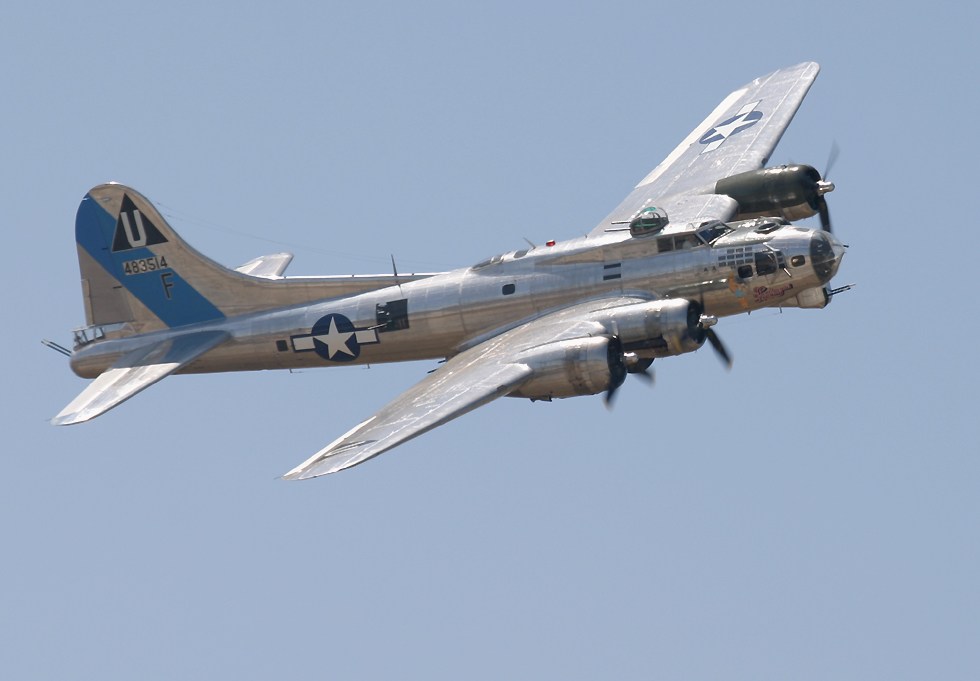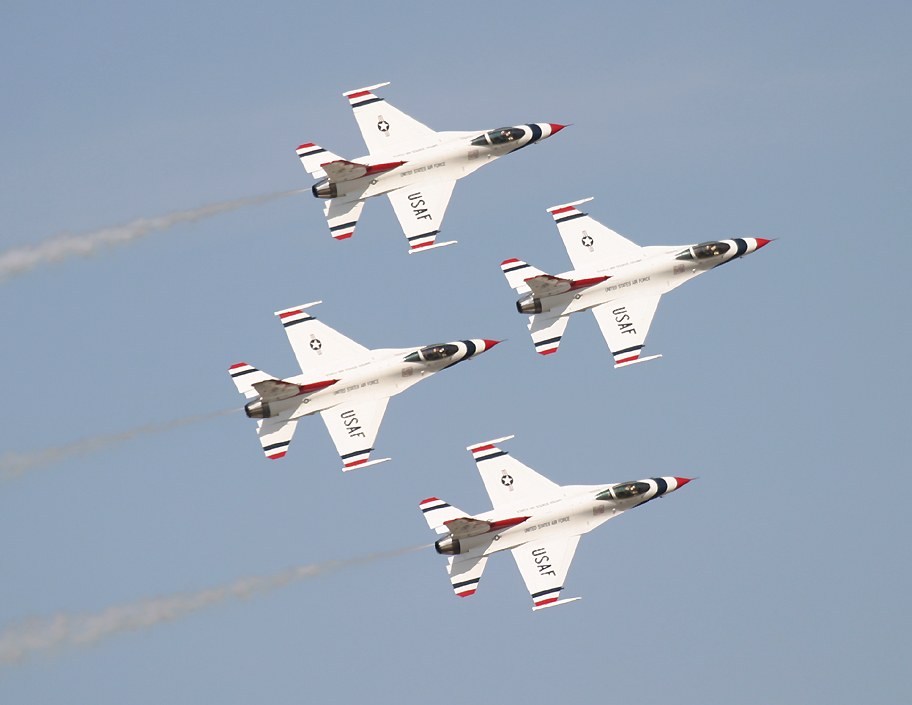Highlights of the 2004 March Field Airshow
|
This is an American world war two B-25 Mitchell bomber called "Heavenly Body", complete with appropriate nose art on the other side. |
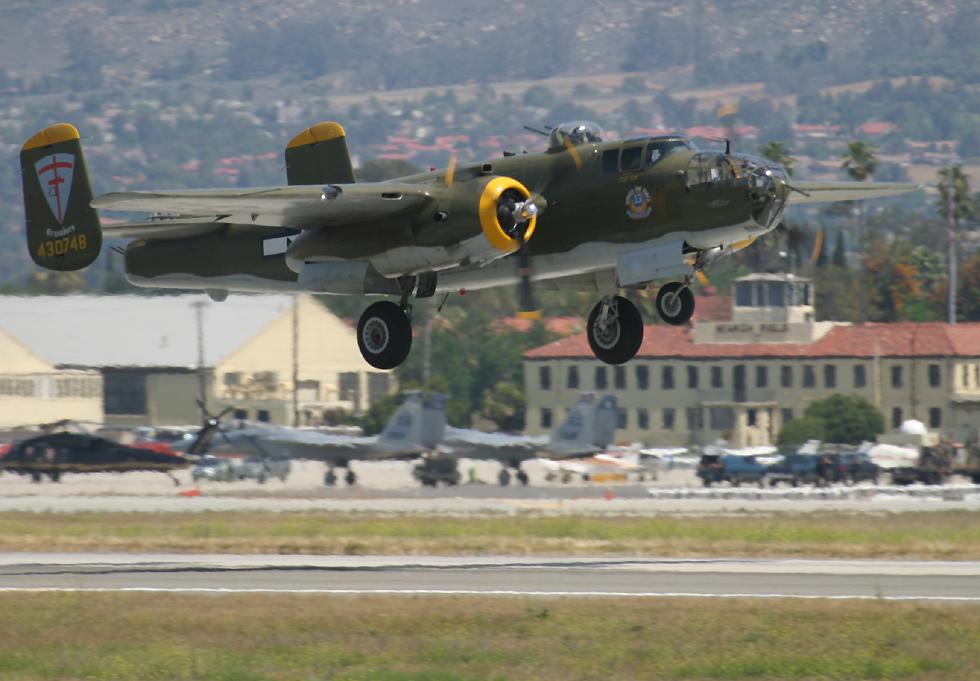 |
|
A nice view of the same aircraft's top gun turret and the bomb bay, taken from the main viewing area. |
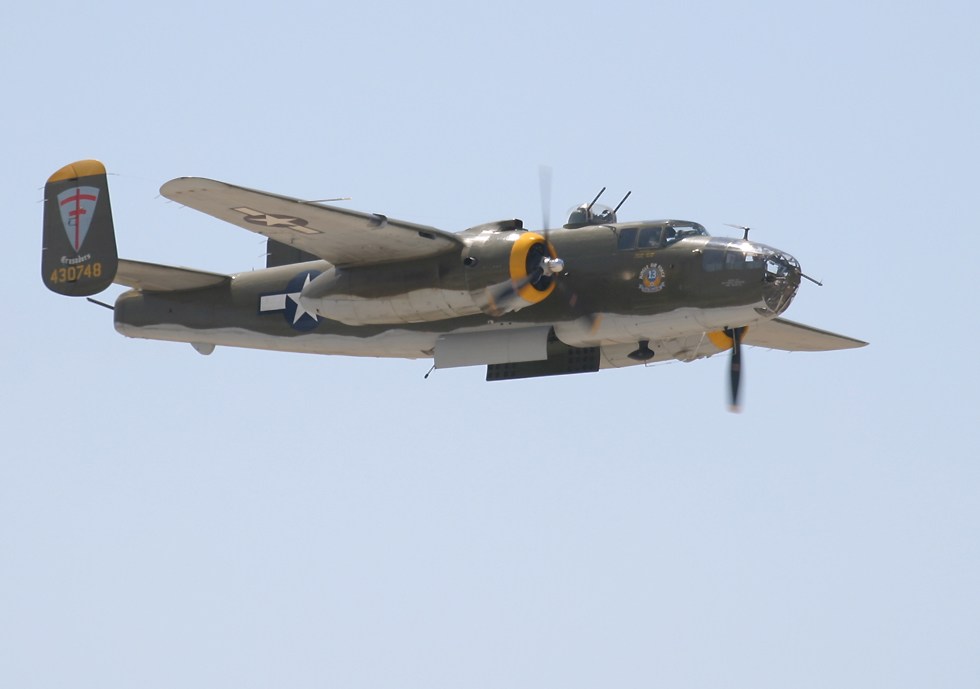 |
|
Well, there's no denying that they put on an excellent display in their F-16 Fighting Falcons, and the color scheme of the Thunderbirds does contrast nicely with the blue skies. |
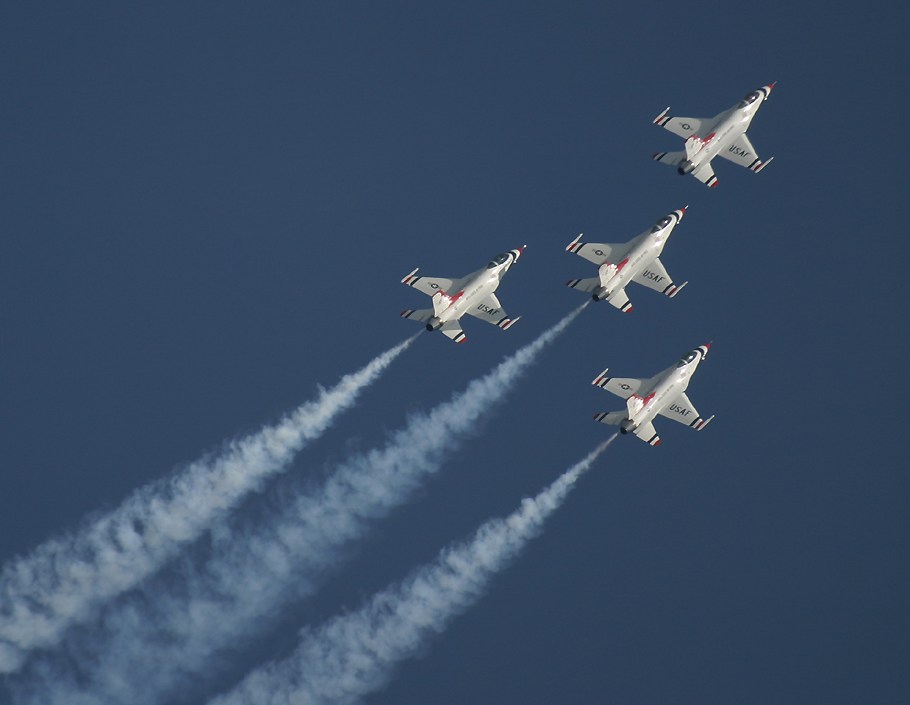
|
